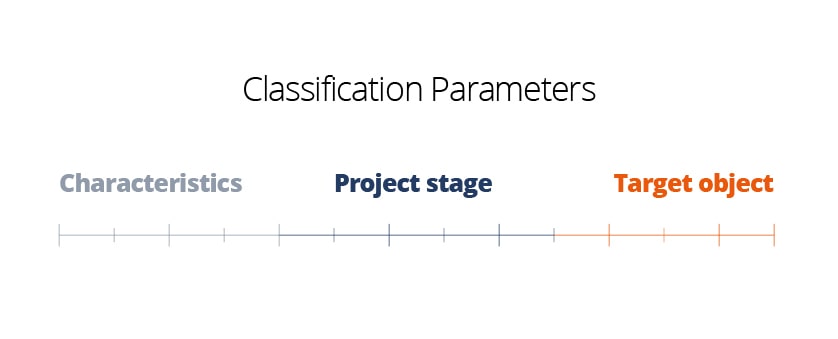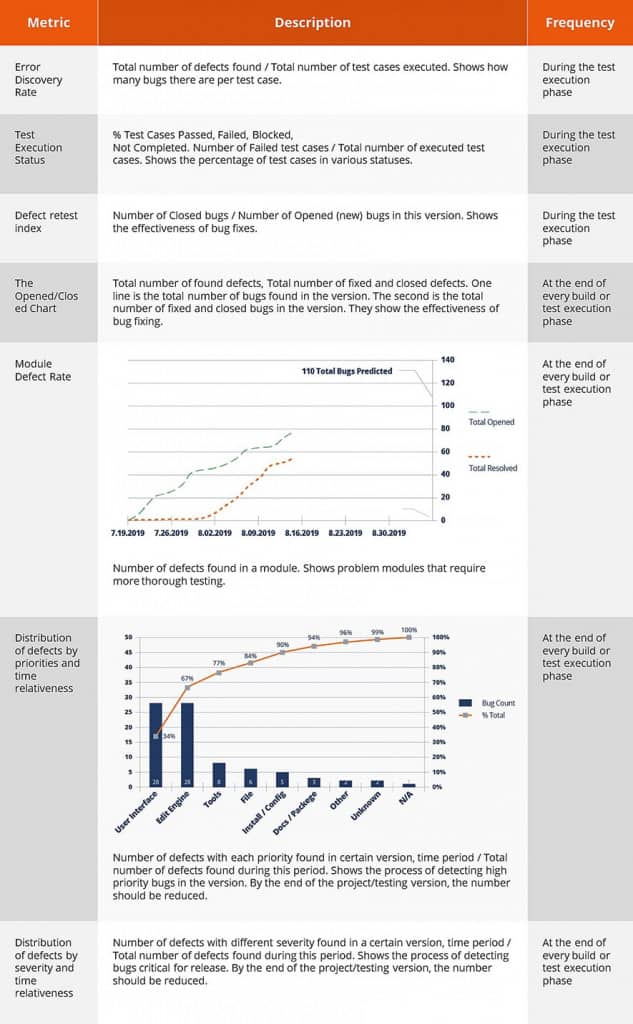Analyzing Results: TOP Most Effective Metrics in Software Testing
by Emma Dallas | September 12, 2019 6:52 am
Have you ever thought about changing the car you have now? If yes, then what were the reasons you named: it’s best years have already passed, it eats too much of your budget, a car doesn’t have much in common with new technologies, right? In other words, you’d like something fresher, cost-effective, and modern.
Ta-da-a-a, here we came up to the notion of a metric, that in our case defined your expectations from the desired car. The same is with testing – to trace its effectiveness[1], you need to define the parameters first. To know more about metrics used in software testing, continue reading.
Classification of Software Testing Metrics
Accurate data should consider the possible characteristics of the subject under analysis. Therefore, testing metrics are classified according to such parameters: characteristics, project stage, target object.
 Speaking about characteristics, software testing metrics can be:
Speaking about characteristics, software testing metrics can be:
- Quantity metrics. These are entities that can be measured. Examples of metrics are the number of defects, coverage of requirements, the number of defects found by users, the ratio of the number of open defects to closed, etc.
- Quality metrics. In addition to quantity, we are also interested in quality. Quality metrics show how well we do this or that project work. For example, the quality of bug reports, the developed test cases, etc. Quality metrics are also called value judgments. As a rule, they should be supported by quantity metrics. For example, we provide a quality assessment[2] of the reported defects. This is a subjective assessment of the project team members. To confirm it, we can analyze the number of defects with the resolution “Not a defect[3]” or the number of requests from programmers to clarify the steps for reproducing the incident.
Also, metrics can be divided depending on the stage of the project:
- Final. These are metrics that demonstrate performance over the entire period of work on the project. What is more, these metrics will help in evaluating projects similar in scope and objectives.
- Interim. These metrics base on the results of iterations. They are compared to the results of the previous iterations and help to detect the possible or existing problems.
- Functional. Such metrics are used when we want to get the results of work on a definite functionality.
Another type of classification for testing metrics base on the target object:
- Process metrics. These metrics evaluate various process characteristics. For example, the total number of errors, the distribution of defects by severity and priority, the number of rejected errors, the number of defects per N lines of code, the effectiveness of testing, the distribution of defects by component, the number of defects reported by users, the cost of fixing defects, etc.
- Result metrics. This type of metric evaluates the result we have got. An example of metrics is the number of defects found by users, the number of product failures, the number of versions released, the cost of product maintenance.
QATestLab specialists track the results of metrics in a trend, that is we track their changes. If the value changes for the worse, then the QA team[4] carries out a more detailed study: they search for possible causes or introduce additional parameters for the study. The figure itself does not mean much, but you can set specific goals. For example, reduce the percentage of missed bugs to 10% and, having studied the weaknesses, take certain steps to achieve this goal.
Comparison of top metrics used in software testing (with description)
During the communication with a client[5], team leads, and sometimes project managers have to provide the list of QA metrics that will be used during the whole project. This enables clients to track the progress of testing and see the interim results. In this section, we will share the quality metrics example that a QA team provides to the customer.

What do you get from Software Quality Metrics in the end?
By using the above metrics, you can get answers to the questions: what exactly did the team do well, what indicators did you grow in, if your management decisions were correct and timely. At any time, you can answer the following client’s questions:
- What is the current state of the version?
- Which product modules are the most critical and buggy?
- Which modules require special attention?
- What metrics work for priority products?
- Is it possible to give the version into production?
Control and monitoring are not less important than quality assurance activities and test results themselves. Only if we measure something we can control it. Using metrics, you get more effective testing.
You can’t say that your new car is awesome before you evaluate its driving, or you probably can judge by the picture, but such evaluation will hardly be an objective one. Use the testing metrics and advice we’ve shared with you and say us if they influenced the run of your project and communication with clients. To do this, subscribe to our blog and keep in touch with useful information on quality assurance matters.
Learn more from QATestLab
Related Posts:
- trace its effectiveness: https://blog.qatestlab.com/2018/02/12/test-website-quality/
- quality assessment: https://qatestlab.com/services/quality-assurance/
- defect: https://blog.qatestlab.com/2011/10/11/main-types-of-defects-in-software-testing/
- QA team: https://blog.qatestlab.com/2019/05/07/building-qa-team/
- communication with a client: https://blog.qatestlab.com/2019/08/13/effective-qa-meetings/
- How to Measure Efficiency of Software Testing?: https://blog.qatestlab.com/2014/11/10/how-to-measure-efficiency-of-software-testing/
- Software Testing & QA: Not-boring Explanation (for Dummies): https://blog.qatestlab.com/2020/06/30/software-testing-explanation/
- Keep the Business Operating Remotely: Guides and Hints From COO: https://blog.qatestlab.com/2020/05/25/hints-for-remote-business/
Source URL: https://blog.qatestlab.com/2019/09/12/top-testing-metrics/

